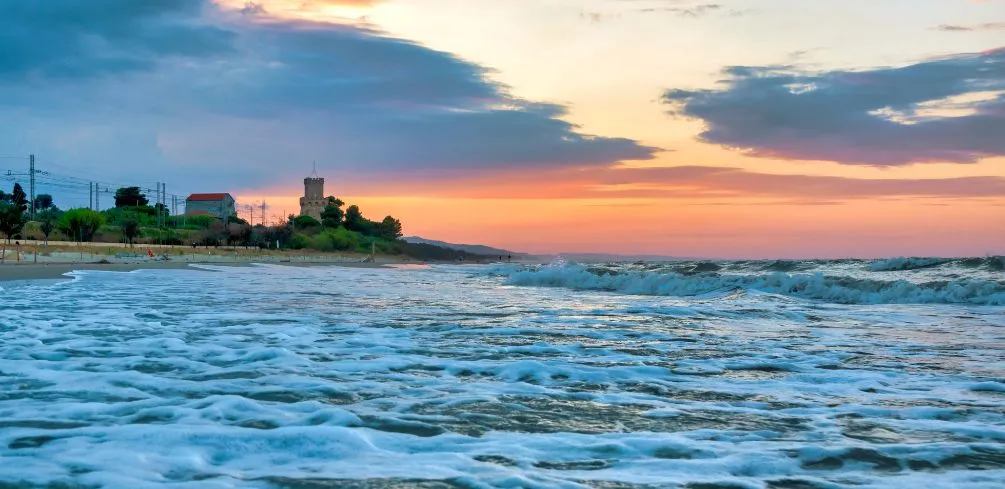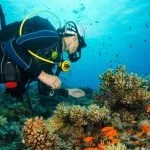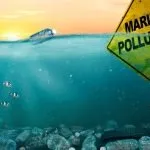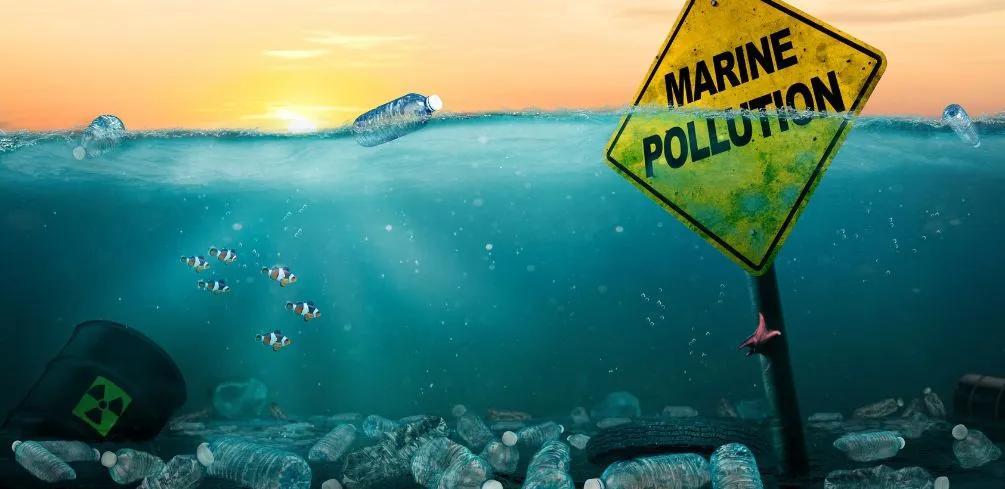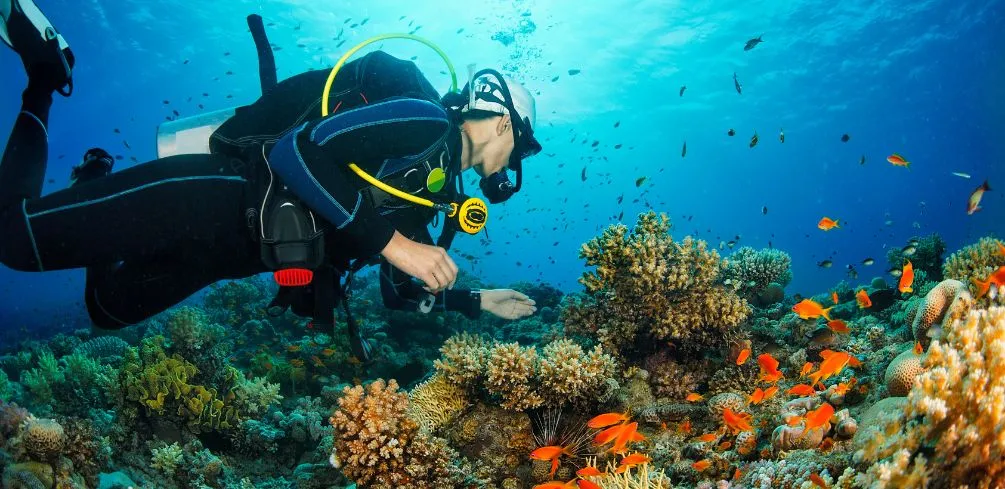The ocean is an incredible resource, full of life and beauty. But it’s also incredibly fragile, and if we don’t take steps to protect it, the consequences could be dire.
Marine protected areas are one of the most important ways we can safeguard our oceans’ health and biodiversity. In this article, I’ll explore the role marine protected areas play in conservation efforts around the world.
It’s no secret that human activities have had a major impact on our oceans. Overfishing, pollution, and climate change are just some of the issues threatening our waters – but with marine protected areas, there’s hope for a brighter future. By setting aside specific pieces of the ocean for protection, these areas create refugees for wildlife to flourish, helping to build healthier ecosystems and restore balance to our waters.
So what does this mean for us? By creating well-managed marine protected areas, we can ensure that future generations can benefit from healthy oceans – something that should be a priority for all of us! So let’s dive into how marine protected areas are being used to protect our oceans and their inhabitants.
Definition Of Marine Protected Areas
Marine Protected Areas (MPAs) are areas of the ocean and coasts that are legally protected from human activities. They’re put in place to conserve and protect marine habitats, species, and ecosystems. MPAs can range in size from a few square meters to several thousand square kilometers.
The purpose of MPAs is to preserve the environment while also allowing people access to use the resources responsibly. This means they help balance environmental conservation with sustainable economic development. MPAs have been used for decades as a tool for marine conservation, but their popularity has grown significantly over the last decade due to the global increase in awareness about climate change and other threats to our oceans.
MPAs include marine reserves, ocean sanctuaries, and other designated areas that are managed by governments or non-governmental organizations for specific ecological objectives. They often prohibit certain activities, such as fishing or mining, while allowing recreational activities like swimming, kayaking, and snorkeling.
In addition to helping protect biodiversity and maintain healthy ecosystems, MPAs can also provide educational opportunities and recreational experiences for people who might not otherwise be able to experience them.
MPAs are an important part of protecting our oceans from further damage caused by human activities such as overfishing, pollution, and climate change. They play an essential role in conserving marine life and preserving our oceans for generations to come.
Purpose And Goals Of Conservation
Are we all just going around in circles? That’s the question I ask myself when it comes to the purpose and goals of conservation. Conservationists are constantly trying to protect our precious marine life, but sometimes it seems like their efforts are in vain. It’s no surprise, then, that Marine Protected Areas (MPAs) have become an increasingly popular tool for conservation. MPAs provide a safe haven for marine species, enabling them to thrive without the threat of exploitation and destruction.
At its core, conservation is about protecting and restoring our environment so that it can continue to provide us with essential services. The main goal of marine conservation is to maintain healthy ecosystems and ensure that human activities do not harm them. By setting up protected areas, we can help minimize the impacts of human activities on our marine environment while also allowing species to recover and thrive.
MPAs are effective tools for wildlife protection because they create a buffer zone between humans and vulnerable species, reducing their exposure to threats such as overfishing and pollution. Additionally, MPAs can also be used as educational tools, providing a platform for public awareness campaigns about marine life and how to protect it.
Ultimately, Marine Protected Areas play an integral role in preserving biodiversity by safeguarding key habitats from destruction or overexploitation while simultaneously giving us insight into how our actions affect nature.
In short, Marine Protected Areas are essential for conserving both the health of our oceans and the future of humanity; without them, our planet would suffer greatly from unchecked human activities. In recognition of this fact, more countries are beginning to recognize the importance of implementing stronger policies that support ocean conservation through MPAs.
Benefits Of Designating Marine Protected Areas
So, now that we’ve discussed the purpose and goals of conservation let’s look at the benefits of designating marine protected areas (MPAs). MPAs are essential for the conservation of our oceans and to protect coastal ecosystems. Not only can they help protect our marine resources from overfishing, pollution, and other human activities, but they also provide a variety of other ocean preservation advantages.
One of the greatest marine conservation benefits that MPAs offer is protecting endangered species. By setting aside specific areas for these species to live and breed in safety, populations can increase and spread out to other parts of their habitat. This helps ensure that future generations will be able to enjoy these creatures in their natural environment.
Another important benefit of MPAs is providing a refuge for fish stocks that are vulnerable to overfishing or unsustainable fishing practices. Designating an area as an MPA provides a safe haven where fish can spawn and grow without being disturbed by humans or commercial fishing operations.
This also helps restore fish populations in surrounding areas since juveniles born within an MPA will eventually make their way into adjacent waters, where they can be caught by recreational fishers or harvested sustainably by commercial operations.
The protection offered by MPAs goes beyond just fish and wildlife; it extends to habitats like coral reefs, seagrass beds, mangroves, and kelp forests. These important ecosystems provide food, shelter, and breeding grounds for many species which would otherwise be unable to survive without them.
Additionally, coastal protection benefits like reducing storm damage or beach erosion are often provided by these habitats as well. In sum, MPAs provide numerous benefits for both wildlife and people alike – making them invaluable tools in preserving our oceans for future generations.
Challenges Faced In Establishing And Maintaining MPAs
Establishing and maintaining Marine Protected Areas (MPAs) for conservation can be a challenging endeavor. A recent survey by the United Nations revealed that less than 5% of the world’s oceans are currently in MPAs, despite their immense potential to protect coastal habitats from overfishing and marine pollution. This highlights the challenges faced in establishing and managing MPAs around the world.
One of the biggest challenges is getting fishermen and other stakeholders to comply with the regulations put in place to protect the MPA. Fishing is often a major source of income in many countries, so it can be difficult to convince people that they should limit what they can catch or not fish at all. In addition, illegal fishing operations often target areas inside these protected zones, making enforcement even more difficult.
Another issue is climate change and ocean acidification, which can have an adverse effect on marine life within an MPA. As temperatures rise, species may migrate away from an area or become extinct due to changes in their habitat or food supply. Ocean acidification also poses a threat, as it decreases overall ocean pH levels and can cause significant damage to coral reefs and other vital ecosystems.
Ultimately, effective management of MPAs is essential for their long-term success in protecting coastal habitats from overfishing, ocean acidification, marine pollution, and other threats. Although establishing and maintaining them presents several challenges, it is vital for conserving our planet’s precious resources for future generations.
Global Outlook For Marine Conservation
The global outlook for marine conservation is promising. Despite the challenges encountered when establishing and maintaining Marine Protected Areas (MPAs), coordinated efforts are being made to protect and restore ocean habitats, species, and resources.
Here’s an overview of the current situation:
- International agreements on marine conservation are gaining traction. Governments around the world are increasingly recognizing the importance of marine conservation and signing international agreements that support marine protected areas legislation and other strategies for protecting ocean life.
- Education initiatives are making a difference in increasing awareness about the importance of marine conservation. Educational programs geared towards both children and adults are helping to spread knowledge about how to protect our oceans, from reducing plastic waste to respecting fishing regulations.
- Corporations are investing in ocean conservation projects. An increasing number of companies recognize that protecting our oceans is an integral part of their sustainability strategy, as well as a way to connect with their customers on an emotional level. They are actively supporting ocean conservation initiatives such as beach cleanups, coral restoration programs, or campaigns against illegal fishing practices.
- Scientists continue to conduct research that informs our understanding of how we can best protect our oceans and develop effective strategies for doing so. This research helps us better understand the impact of human activities on ocean ecosystems and provides insights into how we can reduce this impact while still allowing us access to essential resources like food and energy sources found in the sea.
Overall, there is a clear commitment from governments, corporations, scientists, educational institutions, non-profit organizations, and individuals around the globe to preserving our precious marine resources for future generations—and progress is being made every day!
MPAs have become an important part of this global effort for conserving our oceans’ delicate balance of life forms and habitats—and their success will depend on continued collaboration between all stakeholders involved in this endeavor.
Frequently Asked Questions
What Are The Exact Boundaries Of A Marine Protected Area?
Defining the exact boundaries of a marine protected area (MPA) is essential for conservation efforts to be effective. Take, for example, the Great Barrier Reef Marine Park in Australia, which covers an area of approximately 344,400 square kilometers.
This MPA has zoned areas with different levels of protection and prescriptive management plans that provide guidance on how activities within the protected area should be managed. It also has clearly defined boundaries that are monitored and enforced to ensure compliance with regulations.
When determining the boundary of an MPA, it is important to consider its geographic size, as well as its ecological characteristics, such as habitat type and species presence. The boundary should also take into account any other human activities that may have an impact on the protected environment, such as fishing, tourism, or urbanization. In addition, MPAs often have buffer zones that help protect the core area from outside influences.
MPAs exist in many forms around the world, and they can vary significantly in terms of their:
Size:
- Smaller MPAs can range from a few hectares to tens of thousands of hectares.
- Larger MPAs may cover hundreds of thousands or even millions of square kilometers.
Boundary definition:
- Some MPAs have well-defined boundaries, while others may have more flexible borders depending on changing environmental conditions.
- Establishing clear criteria for defining boundaries is critical for effective management and enforcement.
Management approaches:
- Different MPAs will employ different strategies for monitoring, enforcement, and research activities in order to meet conservation objectives.
These factors all need to be taken into consideration when deciding where an MPA’s boundaries should be drawn. With careful planning and management, marine protected areas can play an important role in preserving biodiversity and ensuring sustainable use of our ocean’s resources.
How Is The Success Of Marine Protected Areas Measured?
I’m sure you’ve heard of Marine Protected Areas (MPAs) and the role they play in conservation. But have you ever considered how success is measured when it comes to MPAs? It’s an important question, as having a way to measure effectiveness can help us better understand the value of these protected areas. So let’s take a look at some of the metrics used to measure MPA success.
The first metric for measuring MPA success is looking at biological diversity. This includes examining the number and type of species present in an MPA, as well as evaluating how healthy those species are. By monitoring this data over time, we can get a better idea of how successful an MPA has been in preserving its unique environment.
Another way to measure MPA success is by gauging human activity within an area. This includes looking at fishing pressure, tourism levels, and other activities that could potentially disrupt or damage the environment within an MPA. This kind of data gives us insight into whether or not people are respecting regulations set out to protect endangered species or habitats within an MPA.
Finally, there are also data related to environmental conditions such as water quality and temperature being monitored on a regular basis in order to ensure that MPAs remain healthy ecosystems capable of supporting diverse wildlife populations. Having access to this kind of information helps us understand if our efforts to protect these areas are effective or not.
By using metrics like these, we can gain a better understanding of just how successful MPAs are in protecting marine environments and conserving biodiversity – knowledge that will be invaluable for future conservation efforts.
What Are The Long-Term Effects Of Establishing MPAs?
I’m sure you’ve heard of marine protected areas (MPAs)—they are an important tool for conservation. But did you know that the long-term effects of establishing MPAs can be quite significant?
According to a study published in Biological Conservation, MPAs have been found to reduce fishing intensity by up to 40% and can increase fish populations by as much as 300%. This means that MPAs play an essential role in preserving marine biodiversity.
What’s more, the success of MPAs is measured not only through their effects on wildlife but also through their benefits to local communities. A study conducted in Tanzania showed that fishermen living near MPAs experienced improved incomes and job opportunities due to increased fish stocks and tourism.
This illustrates how creating smarter fisheries management policies can help improve both human livelihoods and marine biodiversity at the same time.
We are now starting to see evidence of how effective MPAs can be when it comes to conservation efforts. They provide habitats for threatened species, reduce overfishing and pollution, and benefit local communities economically—all factors that contribute towards sustainable marine ecosystems. Ultimately, investing in marine protected areas is key for protecting our planet’s oceans for future generations.
How Can Marine Protected Areas Be Better Enforced?
Enforcing marine protected areas (MPAs) is essential to successful marine conservation efforts. Effective enforcement of MPAs requires strategies that are tailored to the target species, local environment, and goals of the MPA. This article will explore various strategies for strengthening MPA enforcement, with a focus on marine park enforcement, marine enforcement policies, and MPA enforcement strategies.
Marine park enforcement is an important part of maintaining MPAs. Park rangers and other law enforcement officials can conduct patrols to detect illegal activities, such as poaching or fishing, within a protected area. Rangers can also educate visitors about the rules of the park and provide information about how best to protect it. In addition, they can work alongside researchers to monitor changes in the environment and report them back to authorities, who can take appropriate actions if necessary.
Marine enforcement policies are another key component of enforcing MPAs. These policies outline specific restrictions on activities such as fishing, motorized boats, and other recreational activities within an MPA.
They also set out penalties for those who break these rules and regulations. It is important that these policies are regularly reviewed in order to ensure that they are up-to-date and relevant, as well as being properly enforced by local authorities.
Finally, specialized MPA enforcement strategies may be needed depending on the type of species being protected or the environment in which it is located. For example, some MPAs may require more stringent monitoring than others due to their sensitivity or risk factors associated with human activity in the area. Specialized strategies could also include habitat restoration projects, community outreach initiatives, or even using drones for surveillance purposes.
No matter what type of strategy is adopted, it is clear that effective enforcement of MPAs is essential for successful conservation efforts in our oceans today. By implementing tailored solutions specific to each MPA’s unique needs, we can ensure that our marine resources continue to be protected for future generations to enjoy.
How Do Local Communities Benefit From Marine Protected Areas?
Having a marine protected area (MPA) in place can be a great benefit to local communities. These areas allow for marine conservation efforts that help protect biodiversity and ensure sustainable fishing. MPAs also provide economic opportunities by offering recreational activities such as swimming, diving, and snorkeling. Local communities can benefit from MPAs in many ways, from environmental education initiatives to improved fisheries management.
When it comes to the enforcement of MPAs, there are many strategies that can be employed to ensure that these areas are protected. For example, legal frameworks can be used to limit access to certain areas and impose limits on the number of people allowed in an MPA at any given time. Additionally, increased monitoring of activities within the area will help keep poachers and other illegal activities out.
The benefits of having an MPA in place extend beyond just environmental protection; they also contribute significantly to the local economy by providing jobs and other services related to conservation efforts.
In addition, MPAs often provide a space where traditional knowledge is shared between generations, allowing for cultural continuity among local communities. It is clear that MPAs provide numerous benefits not only for marine conservation but also for those living near them.
MPAs are becoming increasingly important tools in conservation efforts due to their ability to protect fragile habitats while simultaneously supporting local communities through job creation, educational initiatives, and improved fisheries management practices.
With strong enforcement measures in place and adequate support from governments, MPAs have the potential to make a big impact on both marine wildlife and local communities worldwide.
Conclusion
In conclusion, it is clear that Marine Protected Areas have a significant role to play in the conservation of our marine ecosystems. They provide a safe haven for species to flourish and can help restore damaged habitats. It is vital that MPAs are enforced effectively and that local communities are able to benefit from them.
This can be likened to a ship being steered on a turbulent ocean – if we get the navigation right, it will take us to calmer waters where we can enjoy the bounty of our oceans.
The long-term effects of establishing MPAs are still very much in their infancy. However, the potential for success is immense. It is important that we measure the success of Marine Protected Areas with accurate data and research so that we can make informed decisions about their future use.
We must remember that without healthy oceans, there can be no life on this planet – they are essentially like an invisible link connecting us all together. As stewards of this Earth, it is up to us to ensure that Marine Protected Areas are used in an efficient and effective manner so as to protect our precious marine resources for generations to come.
